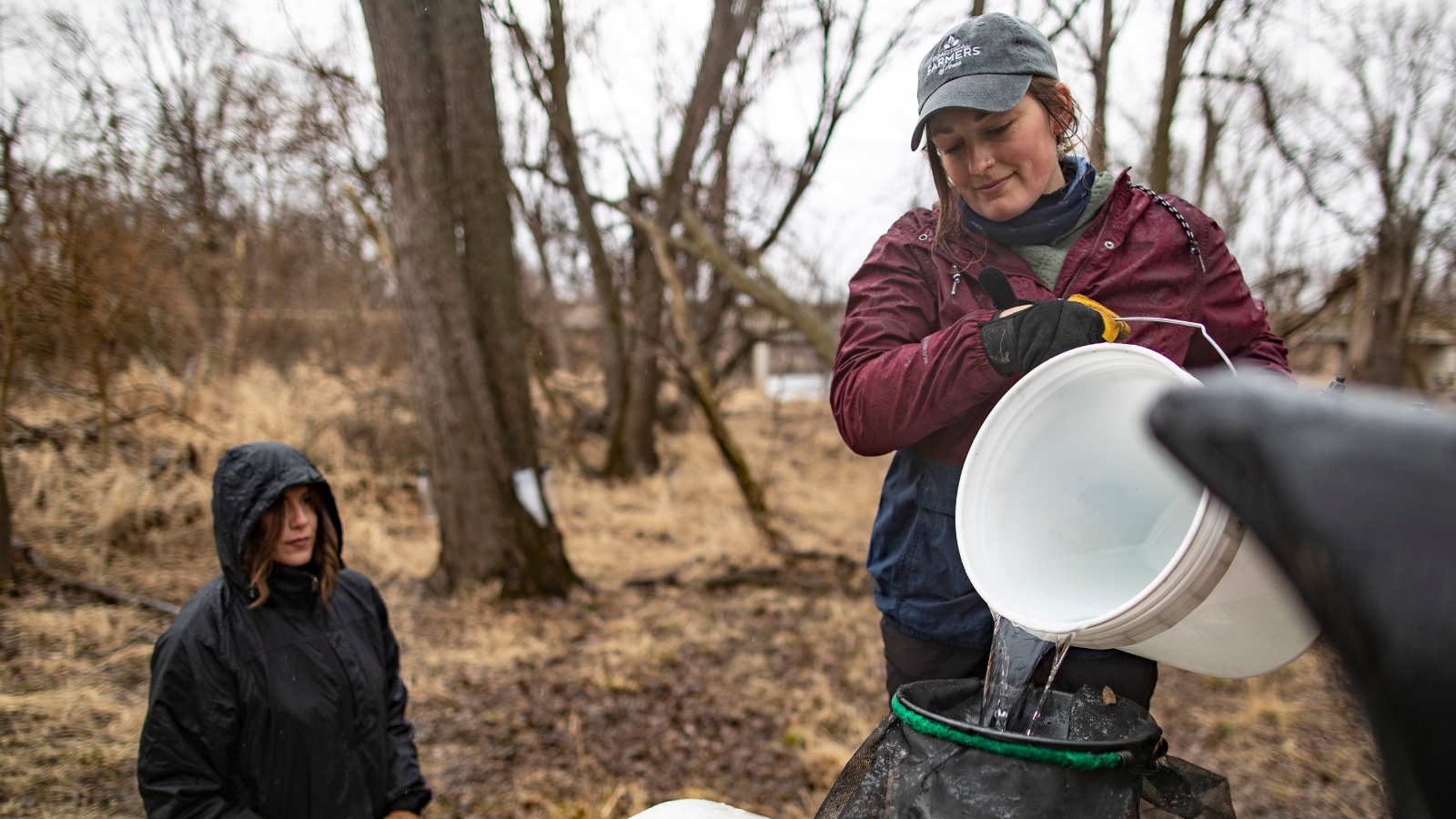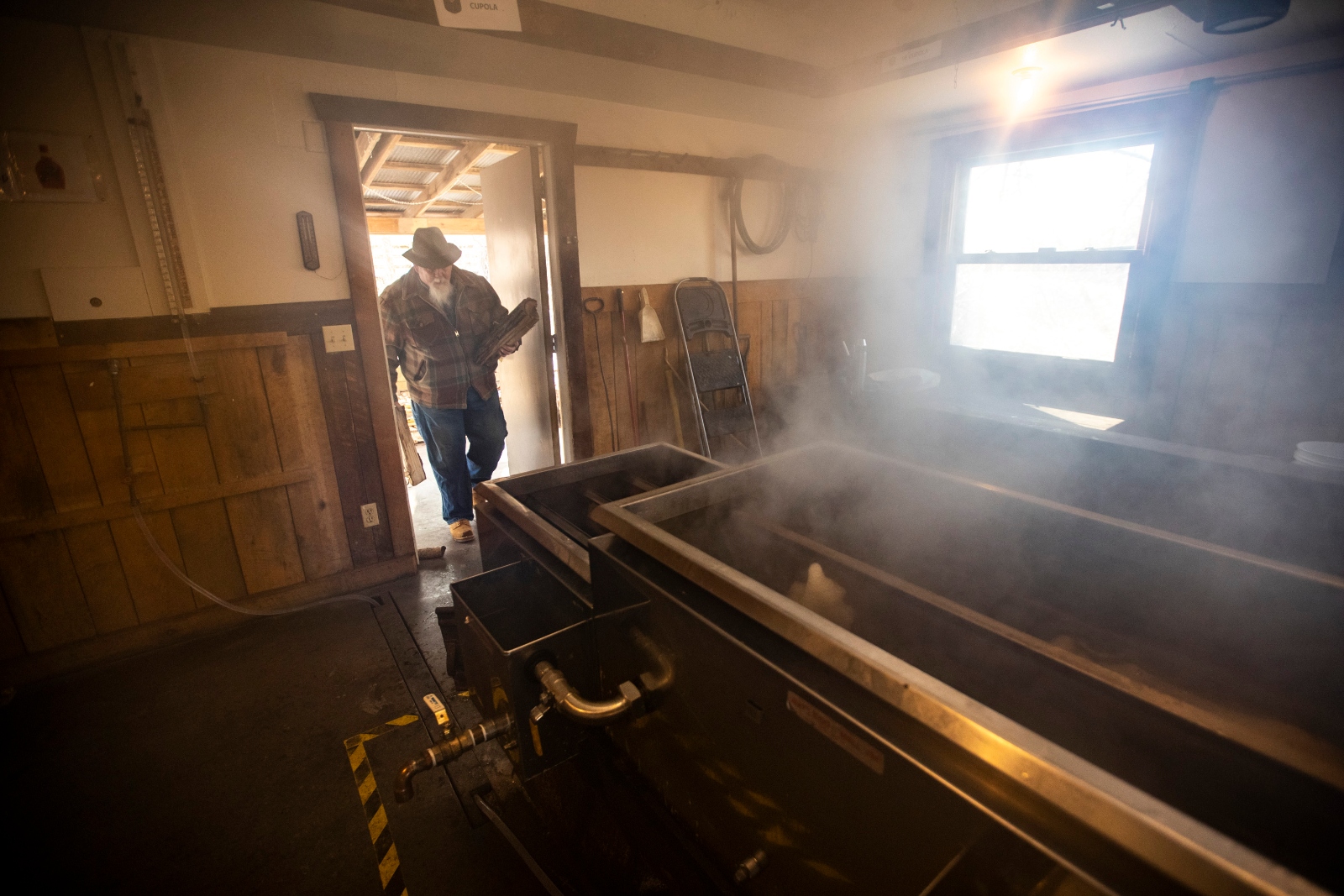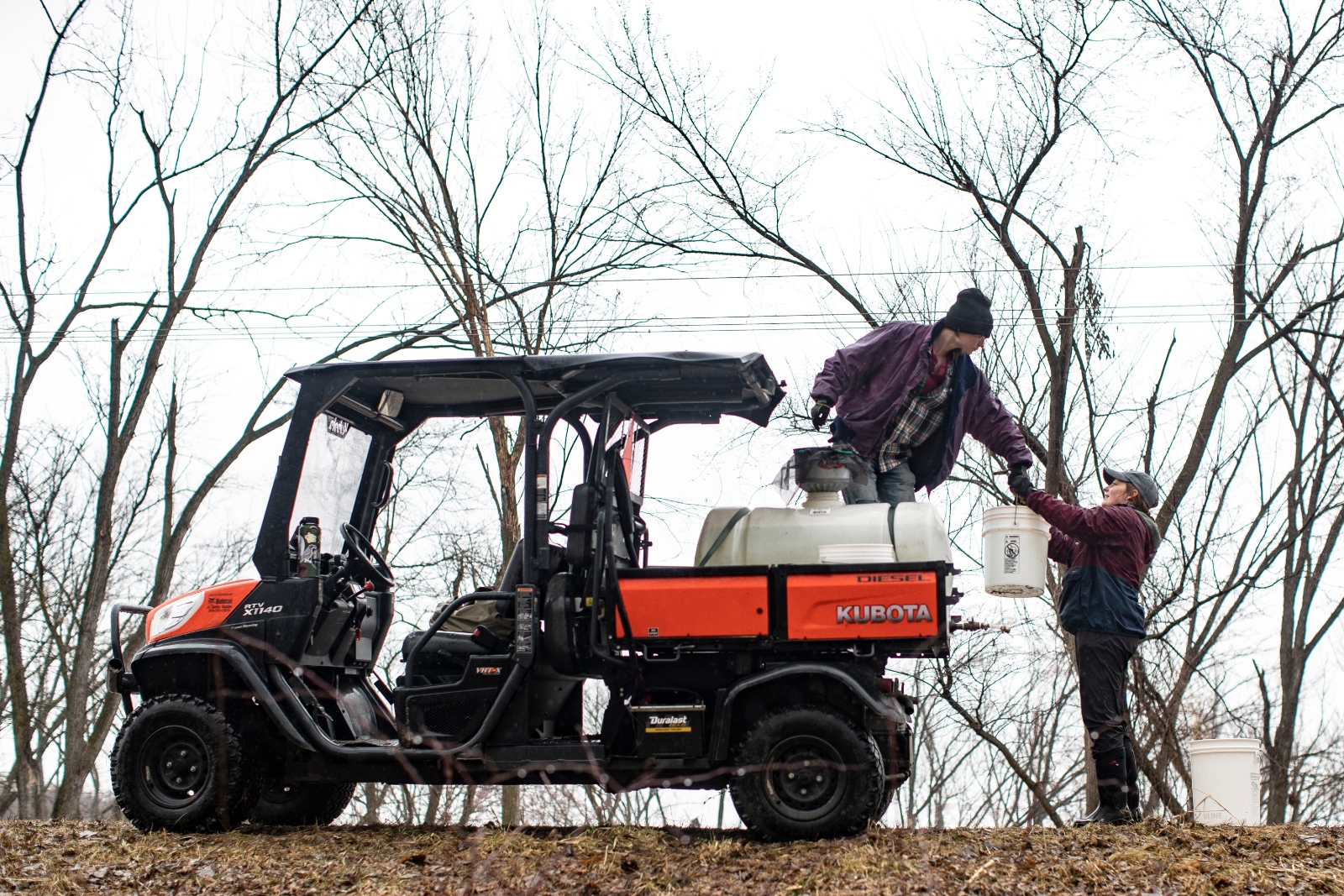
This story is a product of the Mississippi River Basin Ag & Water Deskan independent reporting network based at the University of Missouri in partnership with Report for Americawith major funding from the Walton Family Foundation.
The art of maple syrup production flows through generations of Dan Potter’s family history.
His great-grandfather bought the family farm in rural Iowa in the late 1880s and cleared the land for strawberries, clay and whiskey production. Eventually he moved on to making maple syrup to add to his whiskey. This began a 140-year-old tradition that continued through the Civil War, the Great Depression, and both World Wars.
Potter opened his own maple syrup company with his wife and three daughters in 2009. Great River Maple, in Garnavillo, Iowa, is now one of the state’s most prolific syrup producers.
This year’s record-warm winter got sap flowing early, bringing challenges for the family-run company. They tapped their first trees on January 22 – more than three weeks earlier than ever before.
“When you consider that the average season is somewhere around six-and-a-half weeks long,” Potter said, “you’re talking incredibly early.”
This year’s maple sap season started early for many growers in Upper Midwestern states, which experienced shorter seasons. Some credit those shifts to the year’s record-warm winter. Thanks to the El Niño effectthe season ranked among the top 10 hottest.
But indigenous and non-indigenous experts say human-caused climate change is also having varied and unpredictable effects on the maple crop. Farmers and indigenous communities whose ancestors have tapped trees since time immemorial are changing their practices and planning for an uncertain future.
“The season seems to be getting a little earlier from year to year,” said Theresa Baroun, executive director of the Wisconsin Maple Syrup Producers Association. “But nothing, nothing, nothing like this year. If you talk to a lot of older manufacturers, they’ve never seen anything like this either. It’s just another, weird year here in Wisconsin.”
Climate effects
Even amid increasingly earlier seasons, this year stood out, said Justin Cain, operations manager of Maple Valley Cooperative, of Cashton, Wis., whose members include more than 40 farmers from Wisconsin, Michigan, New York and Vermont.

Geoff Stellfox / The Gazette
“Most of my farmers were pretty much scrambling to get all their faucets in and set up their vacuums,” he said. “You usually don’t even think about that stuff until the end of February.”
By mid-March, cooperative president and maple farmer Cecil Wright and his two business partners had collected about 90 percent of a normal harvest — about 100,000 gallons of maple sap. Wright brewed his first barrel of syrup in early February, about three weeks earlier than normal.
“The weather patterns we’re seeing are typical of the maple producing areas in more southern areas like Ohio, Pennsylvania, Indiana,” Wright said.
In Cedar Rapids, Iowa, the Indian Creek Nature Center tapped its first maple the second week of February, when temperatures were already exceeding 40 degrees. The juice flowed. However, by March 1, their taps had stopped. The season was already over – a month earlier than 2023.
Last year, the center collected nearly 2,000 liters of sap and produced 46 liters of syrup, one of its best years on record. This year it collected 500 liters, just enough to produce 12.
Juice production depends on temperature and microclimates, where just a few degrees of difference can make or break a crop. Flow depends on freeze-thaw cycles, which generate the pressure to push the liquid up and down the trunk of the maple. As daylight increases and if the weather warms too quickly, tree buds open, ending the season.
“We are all limited to what nature gives us,” Cain said. “The trees kind of do their own thing.”
New England and the Midwest dominate maple syrup production in the United States. Wisconsin – the fourth largest producer in the country – produced about 400,000 gallons of syrup worth $13.5 million in 2022.
Because temperature swings drive sap production, the increased variability could actually increase harvest in the Upper Midwest.
Wright said the growing sophistication of weather forecasting makes it easier to plan ahead. But eavesdropping too soon has its own risks. Vacuum equipment and pipes, which can be used in place of buckets on maple farms, can freeze during an unexpected cold snap, and premature faucet holes will close over time.
“We have to recognize that humans affect our environment, and we don’t fully understand everything that’s happening,” Wright said.
In Wisconsin, sugar maples populate the northern and western portions of the state. Experts expect the trees to continue growing as the climate warms, but the sap is likely to contain less sugar. Experts also expect an earlier harvest, but the timing, which has always varied, is becoming more and more unpredictable.
In addition, lack of snowpack, the spread of non-native species and long periods of drought mixed with heavy rainfall events, can stress or damage maple trees to the detriment of future crops.
Indigenous communities are already preparing.
Preservation of lifeways in the future
The production of maple syrup began thousands of years ago when indigenous people began to convert sap into syrup and sugar.

Geoff Stellfox / The Gazette
Ojibwe groups did this in the Upper Midwest, but in the mid-1800s the federal government forcibly acquired their lands and waters through a series of treaties. The bands hunted, gathered and preserved fishing rights over what is now called the Ceded Territory: millions of acres spanning northwestern Michigan and its Upper Peninsula, northern Wisconsin, and northeastern Minnesota.
For Wisconsin tribes, tapping maple trees is a traditional way of life, or bimaadiziwin in the Ojibwe language. In addition to exercising treaty rights, promoting food sovereignty, and strengthening community bonds, Ojibwe people harvest from nature as an act of stewardship. If they do not, the Creator will stop providing for those beings.
Climate change threatens those ways of life and, in turn, identity.
Some tribes have developed climate adaptation plans to manage natural resources in a way that protects cultural practices and treaty rights, including maple sap harvesting.
Some options include tapping sugar maples in multiple locations rather than a concentrated gathering. Tree planting efforts may use non-native seedlings from sources better adapted to future climate conditions or even related species such as red maple.
A bountiful harvest
In Garnavillo, Potter of Great River Maple expected to collect less sap this year, but in some sugarbushes in northern Wisconsin it flowed relatively freely.
The Bad River Band of Lake Superior Chippewa youth sugarbush, in northern Wisconsin, started about two weeks earlier this year, and although the season felt dense, the trees gave generously. During the first two weeks of March, the youth collected 900 liters of sap, from which they produced almost 20 liters of maple syrup, or Anishinaabe-zhiiwaagamizigan.
Maria Nevala, of Odana, Wis., and her partner, JD Lemieux, emceed the program.
The two also have their own sugar bush, which they named Ozaawaa Goon, or “yellow snow.”
“We have a lot of little kids running around and every time they say, “I have to go to the bathroom!’ and I’m like, ‘Go ahead,'” Nevala said.
At Ozaawaa Goon, which she has been tapping for about 13 years, they started collecting sap in March, about 10 days earlier. The weather was so warm, Nevala didn’t need to wear snowshoes.
The two use their syrup in community demonstrations, turn it into sugar and candy, and donate much of the rest.
“It’s a very expensive hobby for us,” Lemieux joked.
By mid-March, the maple buds had not opened, and they were collecting the same amount of sap as previous years, if not a little more.
“What will next year be like?” Nevala said. “It’s unknown. And that can be a good thing or it can be a bad thing. Hopefully that’s a good thing.”




